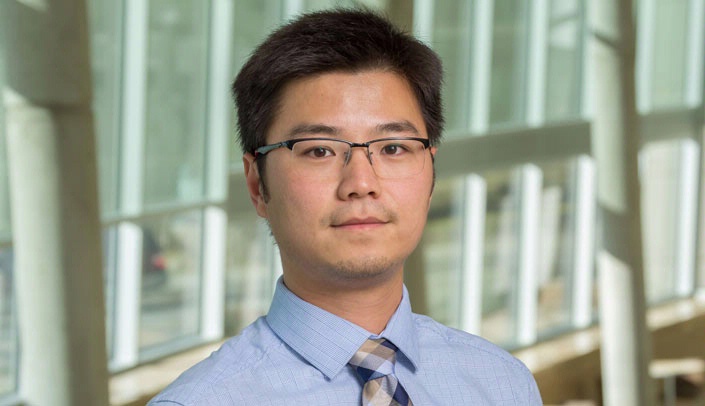Peng Jiang, Ph.D., assistant professor in the division of Developmental Neuroscience at the Munroe-Meyer Institute, has had a manuscript published in the journal Cell Reports. The study documents the efforts of Dr. Jiang and his co-authors to identify a new treatment for white matter injury in the brain.
While most people are familiar with the term “gray matter,” white matter is an important part of brain function. White matter mainly contains nerve fibers and a substance called myelin, which wraps around nerve fibers to facilitate transmission of nerve impulses. The well-known examples of myelin-loss disorders include multiple sclerosis and neonatal hypoxic ischemic brain injury, which is a leading cause of cerebral palsy.
“Our brain has a very limited regenerative capacity. So in these cells, damage is permanent,” Dr. Jiang said. “But we are developing a new strategy to promote myelin regeneration.”
To read Dr. Jiang’s paper in Cell Reports, click here.
Dr. Jiang’s study shows that a type of star-shaped brain cell called astrocytes, which can be derived by human-induced pluripotent stem cells (hiPSCs), can act on oligodendrocytes, the myelin-producing cells, to promote their proliferation. This is a process called oligodendrogenesis and results in the generation of new myelin, suggesting that white-matter injuries can possibly be healed.
The “stem cells” Dr. Jiang is using for the work are generated from the skin cells of patients.
“We can derive these cells from the patient,” he said. “Then we can differentiate these cells to copies of the patients’ own brain cells, so that they don’t have as much immune rejection problems.
“Stem cells provide new hope to treat this disease, because stem cells are capable of differentiating into brain cells, and we can use these cells to replace the damaged cells and rebuild the myelin.”
In early cell culture studies, Dr. Jiang’s work compared the effects of hiPSC-derived immature and mature astrocytes on oligodendrocytes, and found that much better than the mature astrocytes, the immature astrocytes promoted proliferation and the maturation of oligodendrocytes, which promote myelination.
“Normally, there are very few maturing oligodendrocytes in the culture,” he said. “After we add the immature astrocytes, a large number of proliferating and maturating oligodendrocytes show up.”
With animal models of white matter damage, they observed that animals who had received the immature astrocyte transplant showed a higher density of myelin and better learning and memory recovery in tests conducted for the study, compared to the control group of animals without transplanted immature astrocytes.
Going forward, Dr. Jiang and his team want to apply this new strategy to different diseases.
“Now we’re testing a neonatal hypoxic ischemic injury model, and we’re also interested in other myelin-loss disorders such as multiple sclerosis and white matter stroke,” he said. “We are also hopeful that this strategy can be applied to other neurodegenerative disorders that involve white matter injury.”

Wow! This is incredibly exciting! Thank you for your work in this area Dr. Jiang.
Congratulations on your publication in this prestigious journal.
congratulating!!
Congrats Peng !